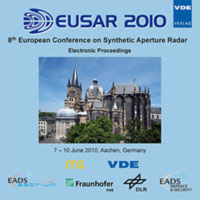Despeckling and information extraction from SLC Synthetic Aperture Radar Images using Huber-Markov model and Gauss-Markov Random Fields
Conference: EUSAR 2010 - 8th European Conference on Synthetic Aperture Radar
06/07/2010 - 06/10/2010 at Aachen, Germany
Proceedings: EUSAR 2010
Pages: 4Language: englishTyp: PDF
Personal VDE Members are entitled to a 10% discount on this title
Authors:
Kseneman, Matej; Gleich, Dušan (University of Maribor, Faculty of Electrical Engineering and Computer Science, Slovenia)
Molina, Daniela Espinoza; Datcu, Mihai (Deutsches Zentrum für Luft- und Raumfahrt, Germany)
Abstract:
This paper presents the despeckling and information extraction using the Single Look Complex (SLC) Synthetic Aperture Radar (SAR) Images. The despeckling methods in general use the amplitude or intensity part of the SAR data. In this paper the complex SAR images are despeckled using the Tikhonov-like optimization, which enables the modeling of complex data. The minimised cost function consist of a likelihood and prior pdfs and the differential part. The likelihood models the distribution of the SAR data, the prior approximates the image. The Huber-Markov random field (HMRF) model and Gauss-Markov random field (GMRF) are used for the scene modeling. The edges and strong scatterers are preserved using the differential part of the data. The experimental results showed that the Gauss-Markov model is superior to the Huber Markov Random Field model using the objective and subjective measurements. The GMRF enables texture parameter extraction from the SLC images.


